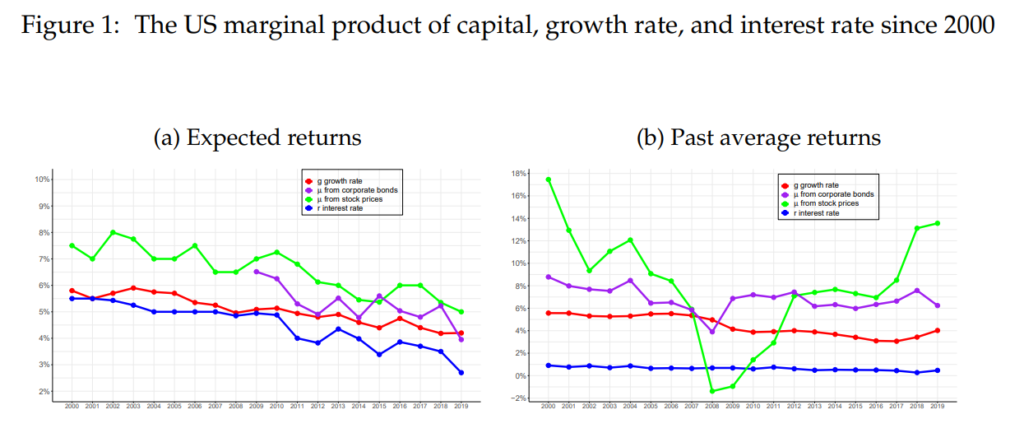Link: https://personal.lse.ac.uk/reisr/papers/99-mpkrg.pdf
Graphic:

Excerpt:
Since real interest rates have been well below the growth rate of the economy, but the marginal product of capital has remained above, modern economies are dynamically efficient, yet there is a bubble component in public debt. Thus, the present value of primary surpluses can be lower than the outstanding debt and governments can run perpetual deficits by collecting the bubble premia. Yet, there is an upper bound on the size of the deficits that depends on how safe and liquid government debt is and on financial development. Higher spending lowers the interest rate and increases inequality, while redistributive policies shrink the feasible amount of persistent public spending, income tax cuts pay for themselves, inflation volatility reduces fiscal space available for spending, and financial repression increases it.
Author(s): Ricardo Reis
Publication Date: December 2020
Publication Site: London School of Economics